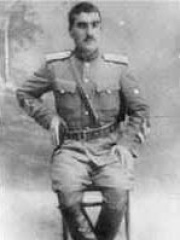

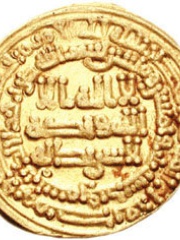
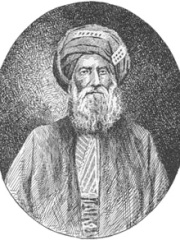
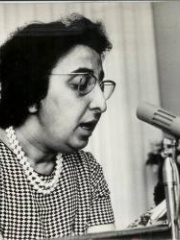

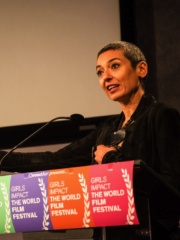
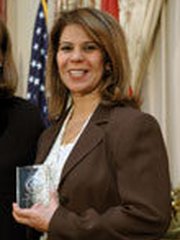
The Most Famous
SOCIAL ACTIVISTS from Iraq
This page contains a list of the greatest Iraqi Social Activists. The pantheon dataset contains 840 Social Activists, 9 of which were born in Iraq. This makes Iraq the birth place of the 23rd most number of Social Activists behind Belarus, and Switzerland.
Top 9
The following people are considered by Pantheon to be the most legendary Iraqi Social Activists of all time. This list of famous Iraqi Social Activists is sorted by HPI (Historical Popularity Index), a metric that aggregates information on a biography's online popularity.

1. Mustafa Barzani (1903 - 1979)
With an HPI of 72.05, Mustafa Barzani is the most famous Iraqi Social Activist. His biography has been translated into 35 different languages on wikipedia.
Mustafa Barzani (14 March 1903 – 1 March 1979), also known as Mullah Mustafa, was a Kurdish nationalist leader and one of the most prominent political figures in modern Kurdish politics. In 1946, he was chosen as the leader of the Kurdistan Democratic Party (KDP) to lead the Kurdish revolt against the Kingdom of Iraq. Barzani was the primary political and military leader of the Kurdish separatist movement until his death in March 1979. He led campaigns of armed insurgency against both the Iraqi and Iranian governments.

2. Rashid ad-Din Sinan (1130 - 1192)
With an HPI of 68.74, Rashid ad-Din Sinan is the 2nd most famous Iraqi Social Activist. His biography has been translated into 21 different languages.
Rashid al-Din Sinan (Arabic: راشد الدين سنان Rāshid ad-Dīn Sinān; 1131/1135 – 1193) also known as the Old Man of the Mountain (Arabic: شيخ الجبل Sheikh al-Jabal; Latin: Vetulus de Montanis), was an Arab Muslim missionary (dāʿī) who served as the leader of the Nizari Ismaili state and the Order of Assassins from 1162 until his death in 1193. An adherent of Nizari Ismailism, a branch of Shia Islam, he was a prominent figure during the Crusades.

3. Al-Mu'tazz (847 - 869)
With an HPI of 67.97, Al-Mu'tazz is the 3rd most famous Iraqi Social Activist. His biography has been translated into 32 different languages.
Abū ʿAbd Allāh Muḥammad ibn Jaʿfar ibn Muḥammad ibn Hārūn al-Muʿtazz bi-ʾLlāh (Arabic: أبو عبد الله محمد بن جعفر; 847 – 16 July 869), better known by his regnal title al-Muʿtazz bi-ʾLlāh (المعتز بالله, "He who is strengthened by God") was the Abbasid caliph from 866 to 869, during a period of extreme internal instability within the Abbasid Caliphate, known as the "Anarchy at Samarra". Originally named as the second in line of three heirs of his father al-Mutawakkil, al-Mu'tazz was forced to renounce his rights after the accession of his brother al-Muntasir, and was thrown in prison as a dangerous rival during the reign of his cousin al-Musta'in. He was released and raised to the caliphate in January 866, during the civil war between al-Musta'in and the Turkish military of Samarra. Al-Mu'tazz was determined to reassert the authority of the caliph over the Turkish army but had only limited success. Aided by the vizier Ahmad ibn Isra'il, he managed to remove and kill the leading Turkish generals, Wasif al-Turki and Bugha al-Saghir, but the decline of the Tahirids in Baghdad deprived him of their role as a counterweight to the Turks. Faced with the assertive Turkish commander Salih ibn Wasif, and unable to find money to satisfy the demands of his troops, he was deposed and died of ill-treatment a few days later, on 16 July 869. His reign marks the apogee of the decline of the Caliphate's central authority, and the climax of centrifugal tendencies, expressed through the emergence of the autonomous dynasties of the Tulunids in Egypt and the Saffarids in the East, Alid uprisings in Hejaz and Tabaristan, and the first stirrings of the great Zanj Rebellion in lower Iraq.

4. David Sassoon (1792 - 1864)
With an HPI of 64.70, David Sassoon is the 4th most famous Iraqi Social Activist. His biography has been translated into 16 different languages.
David Sassoon (October 1792 – 7 November 1864) was a Baghdadi Jewish merchant and philanthropist. David Sassoon served as the treasurer of Baghdad between 1817 and 1829. Fleeing persecution, Sassoon and his family emigrated to Bombay, British India. He became the leader of the Jewish community in Mumbai after the Baghdadi Jews emigrated to the city. Sassoon was the founder of the Sassoon family and the founder of David Sassoon and Sons, which later became David Sassoon & Co., a trading company owned by his family. Sassoon's success as a merchant, in which opium played a key role, made him known as the "Merchant Prince of Bombay". Sassoon also used his wealth for various philanthropic and architectural projects.

5. Al-Shaykh Al-Mufid (948 - 1022)
With an HPI of 63.29, Al-Shaykh Al-Mufid is the 5th most famous Iraqi Social Activist. His biography has been translated into 19 different languages.
Abu 'Abd Allah Muhammad ibn Muhammad ibn al-Nu'man ibn 'Abd al-Salam al-'Ukbari al-Baghdadi (Arabic: أَبُو عَبْدِ ٱللّٰهِ مُحَمَّدُ بْنُ مُحَمَّدٍ بْنِ ٱلنُّعْمَانِ بْنِ عَبْدِ ٱلسَّلَامِ ٱلْحَارِثِيُّ ٱلْعُكْبَرِيُّ ٱلْبَغْدَادِيُّ), known as al-Shaykh al-Mufid (Arabic: الشیخ المفید) and Ibn al-Mu'allim (c. 948–1022 CE), was a prominent Twelver Shia Muslim scholar, jurist (faqīh) and theologian of Iraqi descent. His father was a teacher (mu'allim), hence his nickname Ibn al-Mu'allim ("son of the teacher"). The title "al-Mufid" ("the beneficient [one]") was given to him either by Muhammad al-Mahdi, the twelfth Shia Imam, or by al-Rummani, a Mu'tazilite scholar, after a discussion with him. The leader of the Shia community at his time, he was a staunch mutakallim, theologian, and jurist. He studied and was taught by the prominent Shia scholars al-Shaykh al-Saduq amd Ibn Qulawayh, as well as Mutazilite scholars Abu al-Husayn al-Basri and al-Rummani. His students included Sharif al-Murtaza and Shaykh Tusi, both of whom became important scholars in their own right. Only 10 of his 200 works have survived, among which are Amali, Al-Irshad, Al-Muqni'ah, and Tashih al-Itiqadat.

6. Naziha al-Dulaimi (1923 - 2007)
With an HPI of 61.23, Naziha al-Dulaimi is the 6th most famous Iraqi Social Activist. Her biography has been translated into 29 different languages.
Naziha Jawdat Ishg al-Dulaimi (Arabic: نزيهة جودت عشق الدليمي; 1923 – 9 October 2007) was an early pioneer of the Iraqi feminist movement. She was a co-founder and the first president of the Iraqi Women's League, the first woman minister in modern Iraq history, and the first woman cabinet minister in the Arab world.

7. Salwan Momika (1986 - 2025)
With an HPI of 47.36, Salwan Momika is the 7th most famous Iraqi Social Activist. His biography has been translated into 29 different languages.
Salwan Sabah Matthew Momika (Arabic: سلوان صباح متَّى موميكا; Syriac: ܣܠܘܢ ܨܒܚ ܡܬܝ ܡܘܡܝܟܐ; 23 June 1986 – 29 January 2025) was an Iraqi refugee, and an ex-paramilitary member of the Popular Mobilization Forces (PMF). While living in Sweden, he gained fame for being an anti-Islam demonstrator who organized public demonstrations where he burnt and desecrated the Qur'an. Momika was assassinated on 29 January 2025 during a live broadcast on TikTok.

8. Zainab Salbi (b. 1969)
With an HPI of 44.89, Zainab Salbi is the 8th most famous Iraqi Social Activist. Her biography has been translated into 21 different languages.
Zainab Salbi (Arabic: زينب سلبي; born 1969) is an Iraqi American women's rights activist, writer, television show host, and podcaster. She is the co-founder of Daughters for Earth, a fund and a movement of Daughters rising up worldwide with climate solutions to protect and restore Mother Earth. She is also the co-founder of Women for Women International, a non-profit organization that helps women affected by sexual violence and conflict. She hosted Through Her Eyes and #MeToo, Now What? television shows, about issues affecting women. From 2022 she hosted the Redefined podcast. In her 2005 memoir Between Two Worlds: Escape from Tyranny: Growing Up in the Shadow of Saddam, Salbi recounted her early life: Born in Baghdad to a father who later became Saddam Hussein's personal pilot, her family arranged her marriage and emigration to the United States, in order to remove her from the proximity of Hussein, who had started showing unwanted attention to her. After an abusive marriage in the U.S., she divorced her husband and started her humanitarian career. She is also the author of the nonfiction book The Other Side of War: Women's Stories of Survival & Hope which documents the stories of women survivors of war. In September 2023, Zainab Salbi was honored with the Time100 Impact Award.

9. Sundus Abbas (b. 2000)
With an HPI of 31.66, Sundus Abbas is the 9th most famous Iraqi Social Activist. Her biography has been translated into 14 different languages.
Sundus Abbas (Arabic: سندس عباس) is an Iraqi women's rights activist, who serves as the executive director of the Women's Leadership Institute in Baghdad, she has worked to improve women's rights. Abbas was trained as a political scientist, and she has worked to improve Iraqi women's involvement in their political parties, in the constitutional drafting and amending process, and in national reconciliation and conflict resolution efforts. She has also written for Iraq's main daily newspapers on the topic of women's rights, and held press conferences to address issues of concern to women, as well as teaching classes on decision-making. Abbas has also traveled throughout the Middle East for women's conferences and seminars. In 2007, she received an International Women of Courage Award.
People
Pantheon has 9 people classified as Iraqi social activists born between 847 and 2000. Of these 9, 2 (22.22%) of them are still alive today. The most famous living Iraqi social activists include Zainab Salbi, and Sundus Abbas. The most famous deceased Iraqi social activists include Mustafa Barzani, Rashid ad-Din Sinan, and Al-Mu'tazz. As of April 2024, 2 new Iraqi social activists have been added to Pantheon including Salwan Momika, and Sundus Abbas.
Living Iraqi Social Activists
Go to all RankingsDeceased Iraqi Social Activists
Go to all RankingsMustafa Barzani
1903 - 1979
HPI: 72.05
Rashid ad-Din Sinan
1130 - 1192
HPI: 68.74
Al-Mu'tazz
847 - 869
HPI: 67.97
David Sassoon
1792 - 1864
HPI: 64.70
Al-Shaykh Al-Mufid
948 - 1022
HPI: 63.29
Naziha al-Dulaimi
1923 - 2007
HPI: 61.23
Salwan Momika
1986 - 2025
HPI: 47.36
Newly Added Iraqi Social Activists (2025)
Go to all RankingsOverlapping Lives
Which Social Activists were alive at the same time? This visualization shows the lifespans of the 4 most globally memorable Social Activists since 1700.

